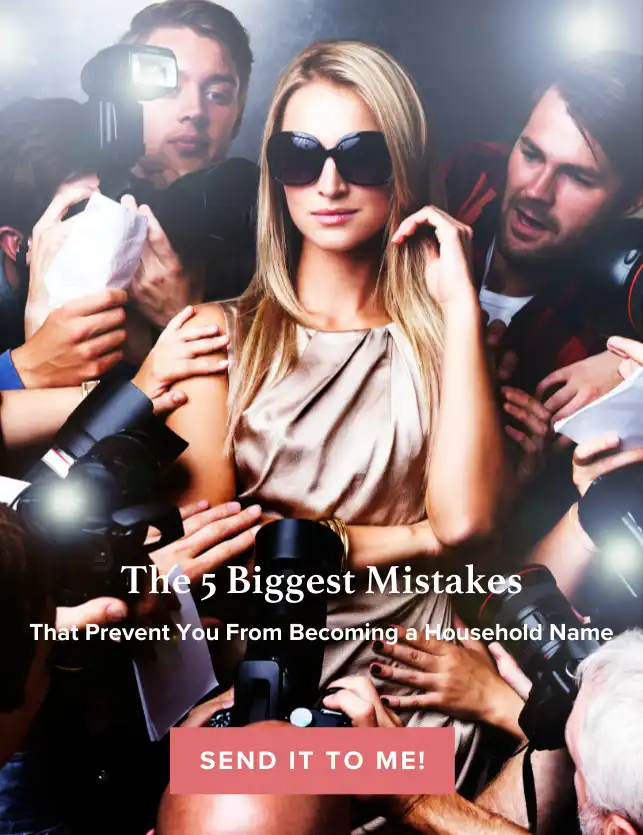Create a TV Pitch Letter and Get on National TV
Summary:
Crafting a successful pitch for TV shows involves understanding the format and host’s style. By creating the entire segment, including theme, guests, questions, and props, you can increase your chances of being selected as a guest. Tips for a compelling pitch include starting with an emotional headline, stating the problem and highlighting credentials, explaining the solution with specific strategies, showcasing dramatic visible results, and emphasizing credentials and influence in the field. These methods can be used for both local and national TV talk shows, with the pitch tailored for each show.
Create a TV Pitch Letter and Get on National TV
Lots of people call me who want to get on The Today Show, Good Morning America, Fox and Friends, The View, MSNBC and more. Most don’t know that if they create the entire segment they have a better chance of becoming a guest on a national TV show.
If they can envision the show, map out the theme, plan the guests, create the questions, suggest the props, plan the B-roll (background footage) and then bring their knowledge and expertise to the table, speaking in 10-20 second sound bites, then they’ll have the chance of a winner show.
I know it sounds obvious, but many people aren’t familiar with the show format or the hosts’ style because they haven’t bothered to watch the shows or study the host’s style so their pitches are off-base. These are high-level shows and the producers want you to be intimate with the content, pacing, length of each segment, and host’s manner.
Being unaware of these things shows disrespect and could give you and your business a bad name.
Also, if you don’t perform well on the show you’ve pretty much squelched your chances of being on other top TV talk shows as the producers know each other and talk about the flops. To be one of the successes follow these tips.
1. Start with a Headline that Spells Out the Story.
Supernanny Teams With An Acclaimed Autism Expert To Help A Child Who Is An Outsider In His Own Home On Supernanny on ABC.
While it’s a show from the past, it’s an excellent example of how to create a TV pitch letter.
This is the headline from an well-done press release. It tells you what the problem is and who is going to solve it—but not how. Enticing. “Outsider in his own home” is immediately appealing as you can already feel the emotion that the show promises.
2. State the Graphic Details of the Problem and Your Credentials to Solve it.
Supernanny Jo Frost teams with world-renowned autism expert Dr. Lynn Koegel to tackle the parenting issues faced by a family whose three-year-old son is an outsider in his own home. This episode of Supernanny aired on the ABC Television Network.
Deirdre and Trae Facente don’t know how to integrate their autistic son Tristin into their daily life with their twins, Kayla and Marlana (4). Tristin is completely non-verbal, caught up in his own world of spinning, jumping, swinging and, often, taking off his clothes. The only time he spends with his family is sitting at the dinner table. The twins, who demand much of their stay-at-home mom’s attention, can’t figure out how to play with their little brother.
The parents are at a loss as to how to help Tristin come out of his zone and join the family.
“World-renowned autism expert” lets you know that the guest has weight. You get a clear idea of what family life looks like in the Facente household and can immediately see how divided the family is. It’s a dramatic situation that has pathos and promises to be good TV.
The specific details of “Tristin is completely non-verbal, caught up in his own world of spinning, jumping, swinging and, often, taking off his clothes,” gives you an immediate sense of what the show will look like. And it even has humor. I mean, what mom wouldn’t be mortified if a neighbor dropped in and one of her kids was swinging and spinning about in the nude?
3. Tell How You’re Going to Provide a Solution.
Enter Dr. Koegel and Supernanny. Together they refine the classic Supernanny methods and teach all the Facentes Dr. Koegel’s inclusion and communication techniques to help engage Tristin. For example, when they introduce the new daily schedule to everyone, Dr. Koegel uses a picture board with Tristin to help him understand in a concrete way.
Notice that you’re given just a little detail about “communication techniques,” but not what they are or how they’ll be used. One example is given (picture board) and it is again very visual, conforming with what works on TV.
While this show has already taped and the end of the story is known, in your pitch you’ll imagine what will take place on the show as if it has already taped. You’ll define your role and the actions that you and others will take and map it out visually for the producers.
4. Show Dramatic Visible Results.
In just a week, silent Tristin goes from zero words to speaking hundreds of times using over 20 new words. He is bursting with requests to play a favorite game, be tickled or eat a treat. Step-by-step, Jo and Dr. Koegel help the parents keep Tristin from his disruptive behaviors by including him in family chores and activities.
These efforts culminate in the boy helping his dad set the table, a seemingly mundane task that is so miraculous for Tristin, it brings tears to Trae’s eyes.
In a sense this show is a “make-over” program. It touches on mundane chores, the fabric of a family and creates poignancy. Success is unmistakable and quantified succinctly by explaining that Tristin is transformed from a mute to a chatterer (zero words to speaking hundreds of time using over 20 new words).
5. Give Your Credentials.
Lynn Kern Koegel, Ph.D is one of the world’s foremost experts on the treatment of autism. She and her husband, Robert L. Koegel, Ph.D., founded the renowned Koegel Autism Center at the Graduate School of Education at the University of California, Santa Barbara.
She co-wrote the bestselling book on autism, Overcoming Autism: Finding the Answers, Strategies, and Hope that can Transform a Child’s Life, which was released in paperback, and also co-authored, with Robert Koegel, the more recent book, “Pivotal Response Treatments for Autism.”
While you don’t have to have written a book, it helps. Books published by established and respected publishing houses carry clout. This husband and wife team even have their own center at a respected university. What’s critical here is your experience and your results. Especially for TV you must be able to show that you’ve achieved results and have influence in your field.
Find out more about how to create pitches that TV producers pay attention to here.
NOTE: You can use these same techniques for any of the local or national TV talk shows.
If you’d like to work with me personally to develop a TV pitch letter for you go here.
Check out our PR and Media Training Workshop to Jumpstart your Publicity

Like what you read? Share it!
Disclosure: Some of the above may be affiliate links that I will be compensated for at no cost to you. They are products or services I’ve either used, vetted or trust. Enjoy!
WE THOUGHT YOU’D ALSO LIKE THESE POSTS

































